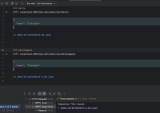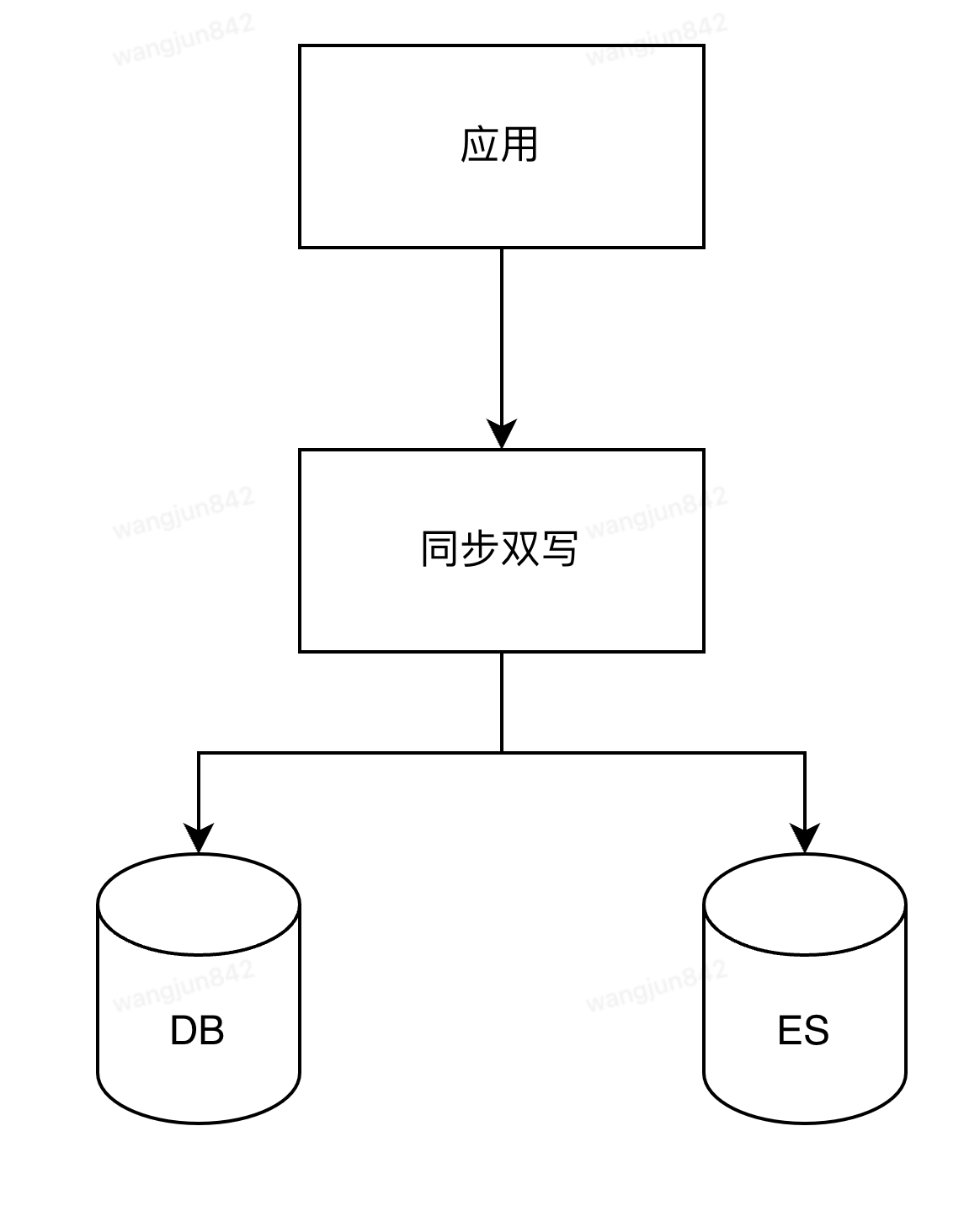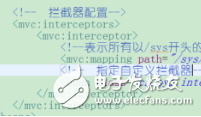作者:京東零售 張均杰
背景
部門內有一些億級別核心業務表增速非常快,增量日均100W,但線上業務只依賴近一周的數據。隨著數據量的迅速增長,慢SQL頻發,數據庫性能下降,系統穩定性受到嚴重影響。本篇文章,將分享如何使用MyBatis攔截器低成本的提升數據庫穩定性。
業界常見方案
針對冷數據多的大表,常用的策略有以2種:
刪除/歸檔舊數據。
分表。
歸檔/刪除舊數據
定期將冷數據移動到歸檔表或者冷存儲中,或定期對表進行刪除,以減少表的大小。此策略邏輯簡單,只需要編寫一個JOB定期執行SQL刪除數據。我們開始也是用這種方案,但此方案也有一些副作用:
1.數據刪除會影響數據庫性能,引發慢sql,多張表并行刪除,數據庫壓力會更大。
2.頻繁刪除數據,會產生數據庫碎片,影響數據庫性能,引發慢SQL。
綜上,此方案有一定風險,為了規避這種風險,我們決定采用另一種方案:分表。
分表
我們決定按日期對表進行橫向拆分,實現讓系統每周生成一張周期表,表內只存近一周的數據,規避單表過大帶來的風險。
分表方案選型
經調研,考慮2種分表方案:Sharding-JDBC、利用Mybatis自帶的攔截器特性。
經過對比后,決定采用Mybatis攔截器來實現分表,原因如下:
1.JAVA生態中很常用的分表框架是Sharding-JDBC,雖然功能強大,但需要一定的接入成本,并且很多功能暫時用不上。
2.系統本身已經在使用Mybatis了,只需要添加一個mybaits攔截器,把SQL表名替換為新的周期表就可以了,沒有接入新框架的成本,開發成本也不高。
分表具體實現代碼
分表配置對象
import lombok.AllArgsConstructor; import lombok.Data; import lombok.NoArgsConstructor; import java.util.Date; @Data @AllArgsConstructor @NoArgsConstructor public class ShardingProperty { // 分表周期天數,配置7,就是一周一分 private Integer days; // 分表開始日期,需要用這個日期計算周期表名 private Date beginDate; // 需要分表的表名 private String tableName; }
分表配置類
import java.util.concurrent.ConcurrentHashMap;
public class ShardingPropertyConfig {
public static final ConcurrentHashMap SHARDING_TABLE = new ConcurrentHashMap();
static {
ShardingProperty orderInfoShardingConfig = new ShardingProperty(15, DateUtils.string2Date("20231117"), "order_info");
ShardingProperty userInfoShardingConfig = new ShardingProperty(7, DateUtils.string2Date("20231117"), "user_info");
SHARDING_TABLE.put(orderInfoShardingConfig.getTableName(), orderInfoShardingConfig);
SHARDING_TABLE.put(userInfoShardingConfig.getTableName(), userInfoShardingConfig);
}
}
攔截器
import lombok.extern.slf4j.Slf4j; import o2o.aspect.platform.function.template.service.TemplateMatchService; import org.apache.commons.lang3.StringUtils; import org.apache.ibatis.executor.statement.StatementHandler; import org.apache.ibatis.mapping.BoundSql; import org.apache.ibatis.mapping.MappedStatement; import org.apache.ibatis.plugin.*; import org.apache.ibatis.reflection.DefaultReflectorFactory; import org.apache.ibatis.reflection.MetaObject; import org.apache.ibatis.reflection.ReflectorFactory; import org.apache.ibatis.reflection.factory.DefaultObjectFactory; import org.apache.ibatis.reflection.factory.ObjectFactory; import org.apache.ibatis.reflection.wrapper.DefaultObjectWrapperFactory; import org.apache.ibatis.reflection.wrapper.ObjectWrapperFactory; import org.springframework.stereotype.Component; import java.sql.Connection; import java.time.LocalDateTime; import java.time.format.DateTimeFormatter; import java.util.Date; import java.util.Properties; @Slf4j @Component @Intercepts({@Signature(type = StatementHandler.class, method = "prepare", args = {Connection.class, Integer.class})}) public class ShardingTableInterceptor implements Interceptor { private static final ObjectFactory DEFAULT_OBJECT_FACTORY = new DefaultObjectFactory(); private static final ObjectWrapperFactory DEFAULT_OBJECT_WRAPPER_FACTORY = new DefaultObjectWrapperFactory(); private static final ReflectorFactory DEFAULT_REFLECTOR_FACTORY = new DefaultReflectorFactory(); private static final String MAPPED_STATEMENT = "delegate.mappedStatement"; private static final String BOUND_SQL = "delegate.boundSql"; private static final String ORIGIN_BOUND_SQL = "delegate.boundSql.sql"; private static final DateTimeFormatter FORMATTER = DateTimeFormatter.ofPattern("yyyyMMdd"); private static final String SHARDING_MAPPER = "com.jd.o2o.inviter.promote.mapper.ShardingMapper"; private ConfigUtils configUtils = SpringContextHolder.getBean(ConfigUtils.class); @Override public Object intercept(Invocation invocation) throws Throwable { boolean shardingSwitch = configUtils.getBool("sharding_switch", false); // 沒開啟分表 直接返回老數據 if (!shardingSwitch) { return invocation.proceed(); } StatementHandler statementHandler = (StatementHandler) invocation.getTarget(); MetaObject metaStatementHandler = MetaObject.forObject(statementHandler, DEFAULT_OBJECT_FACTORY, DEFAULT_OBJECT_WRAPPER_FACTORY, DEFAULT_REFLECTOR_FACTORY); MappedStatement mappedStatement = (MappedStatement) metaStatementHandler.getValue(MAPPED_STATEMENT); BoundSql boundSql = (BoundSql) metaStatementHandler.getValue(BOUND_SQL); String originSql = (String) metaStatementHandler.getValue(ORIGIN_BOUND_SQL); if (StringUtils.isBlank(originSql)) { return invocation.proceed(); } // 獲取表名 String tableName = TemplateMatchService.matchTableName(boundSql.getSql().trim()); ShardingProperty shardingProperty = ShardingPropertyConfig.SHARDING_TABLE.get(tableName); if (shardingProperty == null) { return invocation.proceed(); } // 新表 String shardingTable = getCurrentShardingTable(shardingProperty, new Date()); String rebuildSql = boundSql.getSql().replace(shardingProperty.getTableName(), shardingTable); metaStatementHandler.setValue(ORIGIN_BOUND_SQL, rebuildSql); if (log.isDebugEnabled()) { log.info("rebuildSQL -> {}", rebuildSql); } return invocation.proceed(); } @Override public Object plugin(Object target) { if (target instanceof StatementHandler) { return Plugin.wrap(target, this); } return target; } @Override public void setProperties(Properties properties) {} public static String getCurrentShardingTable(ShardingProperty shardingProperty, Date createTime) { String tableName = shardingProperty.getTableName(); Integer days = shardingProperty.getDays(); Date beginDate = shardingProperty.getBeginDate(); Date date; if (createTime == null) { date = new Date(); } else { date = createTime; } if (date.before(beginDate)) { return null; } LocalDateTime targetDate = SimpleDateFormatUtils.convertDateToLocalDateTime(date); LocalDateTime startDate = SimpleDateFormatUtils.convertDateToLocalDateTime(beginDate); LocalDateTime intervalStartDate = DateIntervalChecker.getIntervalStartDate(targetDate, startDate, days); LocalDateTime intervalEndDate = intervalStartDate.plusDays(days - 1); return tableName + "_" + intervalStartDate.format(FORMATTER) + "_" + intervalEndDate.format(FORMATTER); } }
臨界點數據不連續問題
分表方案有1個難點需要解決:周期臨界點數據不連續。舉例:假設要對operate_log(操作日志表)大表進行橫向分表,每周一張表,分表明細可看下面表格。
| 第一周(operate_log_20240107_20240108) | 第二周(operate_log_20240108_20240114) | 第三周(operate_log_20240115_20240121) |
|---|---|---|
| 1月1號 ~ 1月7號的數據 | 1月8號 ~ 1月14號的數據 | 1月15號 ~ 1月21號的數據 |
1月8號就是分表臨界點,8號需要切換到第二周的表,但8號0點剛切換的時候,表內沒有任何數據,這時如果業務需要查近一周的操作日志是查不到的,這樣就會引發線上問題。
我決定采用數據冗余的方式來解決這個痛點。每個周期表都冗余一份上個周期的數據,用雙倍數據量實現數據滑動的效果,效果見下面表格。
| 第一周(operate_log_20240107_20240108) | 第二周(operate_log_20240108_20240114) | 第三周(operate_log_20240115_20240121) |
|---|---|---|
| 12月25號 ~ 12月31號的數據 | 1月1號 ~ 1月7號的數據 | 1月8號 ~ 1月14號的數據 |
| 1月1號 ~ 1月7號的數據 | 1月8號 ~ 1月14號的數據 | 1月15號 ~ 1月21號的數據 |
注:表格內第一行數據就是冗余的上個周期表的數據。
思路有了,接下來就要考慮怎么實現雙寫(數據冗余到下個周期表) ,有2種方案:
1.在SQL執行完成返回結果前添加邏輯(可以用AspectJ 或 mybatis攔截器),如果SQL內的表名是當前周期表,就把表名替換為下個周期表,然后再次執行SQL。此方案對業務影響大,相當于串行執行了2次SQL,有性能損耗。
2.監聽增量binlog,京東內部有現成的數據訂閱中間件DRC,讀者也可以使用cannal等開源中間件來代替DRC,原理大同小異,此方案對業務無影響。
方案對比后,選擇了對業務性能損耗小的方案二。
監聽binlog數據雙寫注意點
1.提前上線監聽程序,提前把老表數據同步到新的周期表。分表前只監聽老表binlog就可以,分表前只需要把老表數據同步到新表。
2.切換到新表的臨界點,為了避免丟失積壓的老表binlog,需要同時處理新表binlog和老表binlog,這樣會出現死循環同步的問題,因為老表需要同步新表,新表又需要雙寫老表。為了打破循環,需要先把雙寫老表消費堵上讓消息暫時積壓,切換新表成功后,再打開雙寫消費。
監聽binlog數據雙寫代碼
注:下面代碼不能直接用,只提供基本思路
/**
* 監聽binlog ,分表雙寫,解決數據臨界問題
*/
@Slf4j
@Component
public class BinLogConsumer implements MessageListener {
private MessageDeserialize deserialize = new JMQMessageDeserialize();
private static final String TABLE_PLACEHOLDER = "%TABLE%";
@Value("${mq.doubleWriteTopic.topic}")
private String doubleWriteTopic;
@Autowired
private JmqProducerService jmqProducerService;
@Override
public void onMessage(List messages) throws Exception {
if (messages == null || messages.isEmpty()) {
return;
}
List entryMessages = deserialize.deserialize(messages);
for (EntryMessage entryMessage : entryMessages) {
try {
syncData(entryMessage);
} catch (Exception e) {
log.error("sharding sync data error", e);
throw e;
}
}
}
private void syncData(EntryMessage entryMessage) throws JMQException {
// 根據binlog內的表名,獲取需要同步的表
// 3種情況:
// 1、老表:需要同步當前周期表,和下個周期表。
// 2、當前周期表:需要同步下個周期表,和老表。
// 3、下個周期表:不需要同步。
List syncTables = getSyncTables(entryMessage.tableName, entryMessage.createTime);
if (CollectionUtils.isEmpty(syncTables)) {
log.info("table {} is not need sync", tableName);
return;
}
if (entryMessage.getHeader().getEventType() == WaveEntry.EventType.INSERT) {
String insertTableSqlTemplate = parseSqlForInsert(rowData);
for (String syncTable : syncTables) {
String insertSql = insertTableSqlTemplate.replaceAll(TABLE_PLACEHOLDER, syncTable);
// 雙寫老表發Q,為了避免出現同步死循環問題
if (ShardingPropertyConfig.SHARDING_TABLE.containsKey(syncTable)) {
Long primaryKey = getPrimaryKey(rowData.getAfterColumnsList());
sendDoubleWriteMsg(insertSql, primaryKey);
continue;
}
mysqlConnection.executeSql(insertSql);
}
continue;
}
}
數據對比
為了保證新表和老表數據一致,需要編寫對比程序,在上線前進行數據對比,保證binlog同步無問題。
具體實現代碼不做展示,思路:新表查詢一定量級數據,老表查詢相同量級數據,都轉換成JSON,equals對比。
審核編輯 黃宇
-
SQL
+關注
關注
1文章
773瀏覽量
44223 -
京東
+關注
關注
2文章
1000瀏覽量
48662 -
mybatis
+關注
關注
0文章
62瀏覽量
6734
發布評論請先 登錄
相關推薦
介紹一種OpenAtom OpenHarmony輕量系統適配方案

動能攔截器六自由度仿真建模研究
百分表和千分表的區別是什么

什么是分庫分表?為什么分庫分表?什么情況下會用分庫分表呢?
springboot過濾器和攔截器哪個先執行
使用go語言實現一個grpc攔截器

分庫分表后復雜查詢的應對之道:基于DTS實時性ES寬表構建技術實踐





 一種輕量分表方案-MyBatis攔截器分表實踐
一種輕量分表方案-MyBatis攔截器分表實踐












評論